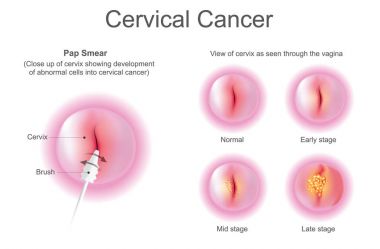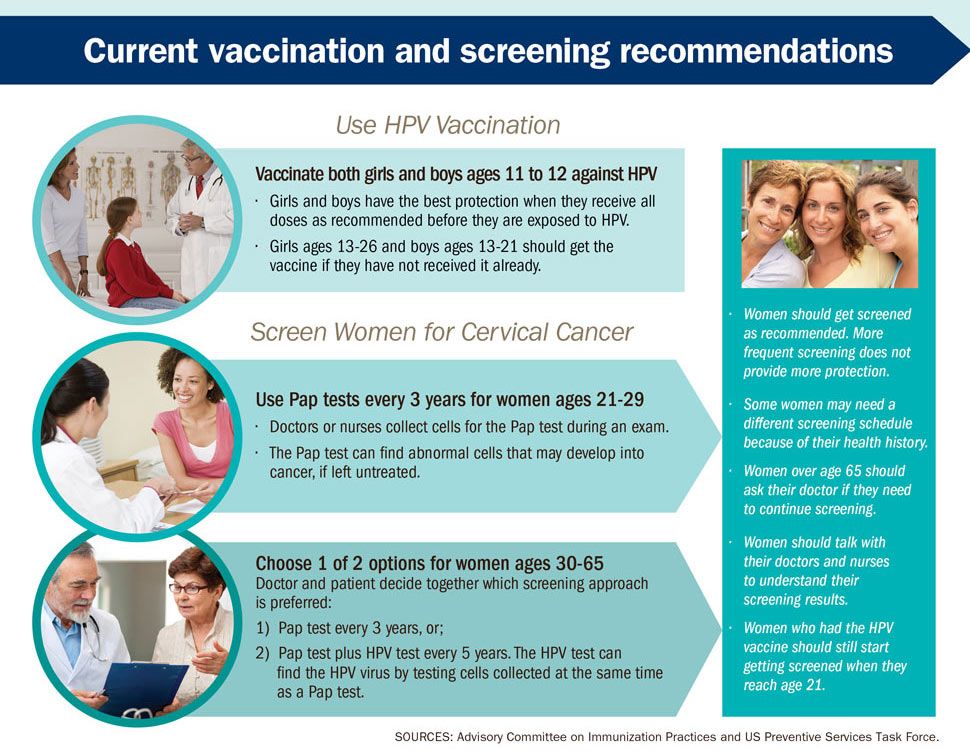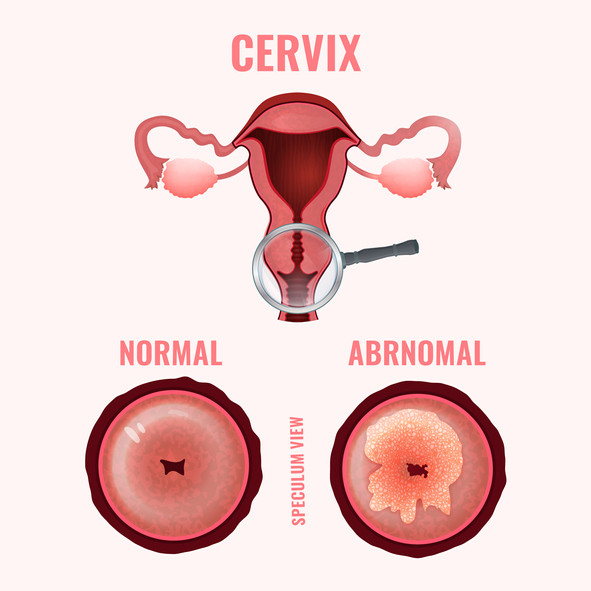However the cells have already started to spread and infect into deeper tissues. Surgery options after birth for early-stage cancers include a.
Everything You Should Know About Cervical Cancer Zeeva Clinic
Survival from early stage cervical cancer appears comparable for patients treated either with surgery or with radiotherapy.

Early stage cervical cancer. Lets start with what are the symptoms of cervical cancer in the early stages. A higher number such as stage IV means a more advanced cancer. In the early stages cervical cancer doesnt usually have symptoms so many people with the condition dont know they have it.
And within a stage an earlier letter means a lower stage. Cervical cancer stage ranges from stages I 1 through IV 4. Symptoms and signs of.
As a rule the lower the number the less the cancer has spread. Locally advanced cervical cancer this usually includes stages 1B2 to 4A. Sharp causeless weight loss.
Regular cervical cancer screenings can. 63 to 58 patients have survived after being cured at stage 2 of cervical cancer and 35 to 32 have survived the stage 3 cervical cancer after treatment. Both cervical cancer stages 0 and 1 remain on the surface of the cervix.
If you are a male you may experience pain in the testicles or testicular discharge. Increasing weakness in the body malaise fatigue. The specific type of cervical cancer If the cancer is at a very early stage such as stage IA most doctors believe it is safe to continue the pregnancy to term and have treatment several weeks after birth.
The early stage of cervical cancer can be accompanied by both single and systemic signs for example. Most patients with smaller tumors are treated with primary surgery. Abnormal vaginal bleeding such as bleeding after vaginal sex bleeding after menopause bleeding and spotting between periods or having menstrual periods that are longer or heavier than usual.
Although cervical cancer is a common cancer type 93 to 80 patients have survived the 5 year survival stage and more after being cured in the stage 1 of cervical cancer. When this happens the most common symptoms are. You may even experience a fever and if you have any fever symptoms they should stop within a few days of diagnosis.
Surviving cervical cancer depends upon the stage or extent of spread at the time it is found. If the cancer comes back after initial treatment this is known as recurrent cancer. Stage 2 cervical cancer is identified if the cells have spread to the surrounding tissues of the cervix.
In particular early stage cervical cancers like precancerous changes typically do not produce symptoms. Based upon women diagnosed between 2000 and 2002 5-year survival rates ranged from 93 for cancers detected early to 15 for cancers that were widespread. For more information about using the HPV test and the Pap test to find cervical cancer early see The American Cancer Society Guidelines for the Prevention and Early Detection of Cervical Cancer.
Being aware of any signs and symptoms of cervical cancer can also help avoid delays in diagnosis. Symptoms may develop when the cervical cancer cells start to invade surrounding tissues. Finding Cervical Cancer Early Catching cancer early often allows for more treatment options.
Cervical cancer may not produce any symptoms or signs. Early-stage cervical cancer this usually includes stages 1A to 1B1. There are several options for treatment of early-stage cervical cancer.
Acceptable treatment options for early stage cervical cancer include the following. Symptoms often do not begin until the cancer becomes larger and grows into nearby tissue. Some early cancers may have signs and symptoms that can be noticed but that is not always the case.
In the early stages you may notice bleeding on your cervix. Cervical cancer stage 1 is the second stage. Advanced-stage or metastatic cervical cancer this usually means stage 4B.
The most common treatment for early-stage cervical cancers is radical hysterectomy surgical removal of the cervix uterus and surrounding tissues called the parametrium. Decisions about treatment depend on the stage of the cancer your age and health and your and your doctors preferences.


